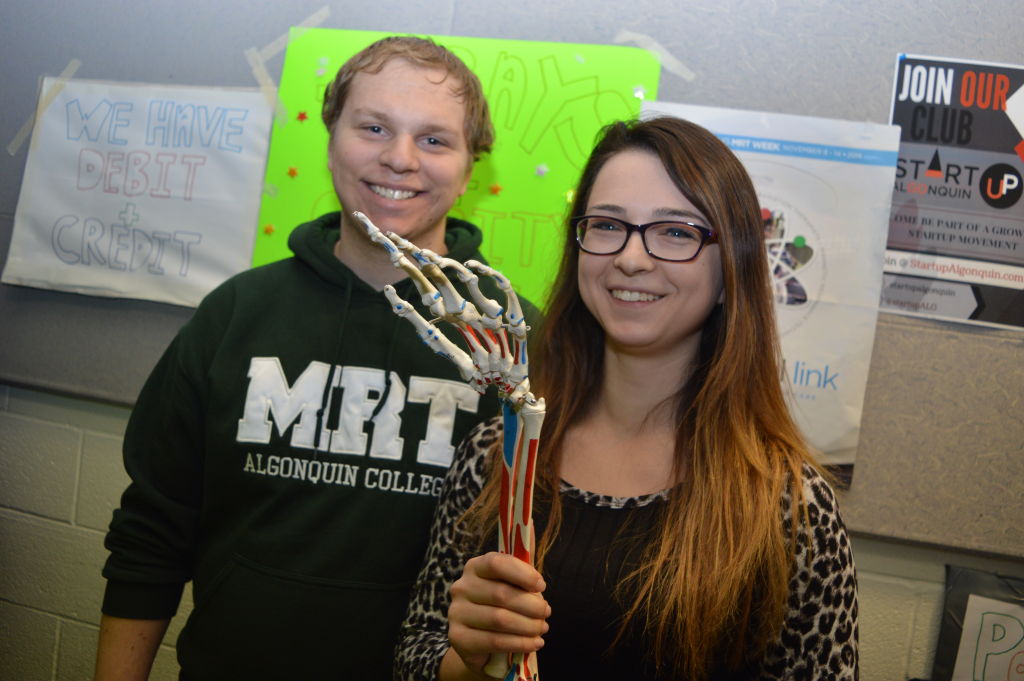
There was another kind of commemoration the week of Remembrance Day as second-year medical radiation technology students sold posters and cards featuring images of x-rayed flowers and pumpkins.
The tightly-knit group were raising funds for the Royal Ottawa Mental Health Centre in memory of their friend and former classmate Matthew Campbell, who died in the spring due to a mental health crisis.
“We had a student lost last year who had mental health issues, so we decided to promote a mental health charity,” said Joshua Bencze, one of the organizers of the fundraiser. Among the designs featured was the card the group had given Campbell’s parents after his death.
“It was a small group of students to begin with,” said Ian Koch, “especially with a difficult program, you really grow together and rely on each other a lot.”
Earlier this semester, Bencze, Koch and the other second-year radiation technology students registered as a club with the Students’ Association. With about 70 members plus faculty support, the Medical Radiation Technology Society is off to a great start.
“We kept it nice and simple,” said Koch, referring to the club’s name’s similarity to that of their program.
They timed their endeavour to correspond with Medical Radiation Technologists Week, a province-wide initiative launched by their governing body, the College of Medical Radiation Technologists of Ontario. It happened to fall on midterm season, but didn’t deter the team from enthusiastically promoting their goods.
They performed the scans at the Civic campus of the Ottawa Hospital, which is just two blocks from the Royal. The group were happy with how it all fell into place.
“We went to the Royal to run through the plan with them and they gave us information cards to hand out,” said Jeffrey Ng. Along with the posters and cards, they were handing out pamphlets and raising mental health awareness.
“It’s a good thing to have on you – in case you or anyone you know has a mental health crisis, you have someone to talk to,” said Bencze. “We’ve handed out a lot of these.”
Part of the popularity of their designs can be attributed to the clever combination of an artistic output from a scientific field.
“It’s particularly cool because flowers can’t be x-rayed,” said Stephanie Kohlsmith, who explained their process, which included placing the flowers in water spiked with an optimal contrast agent. The contrast spread through the stems making their petals and leaves ready for imaging – similar to how vascular studies are performed.
“It’s a unique form of art,” added Sandy Clark. “Not something you see every day.”
The students of Algonquin clearly agreed: the MRT Society sold roughly $1,800 in posters and cards.


